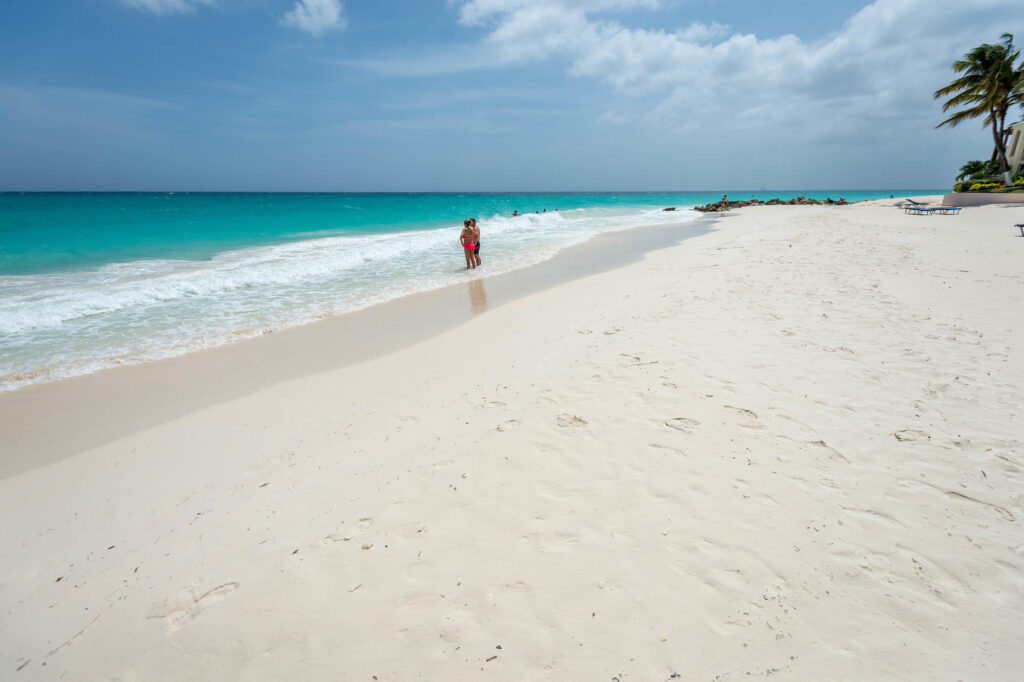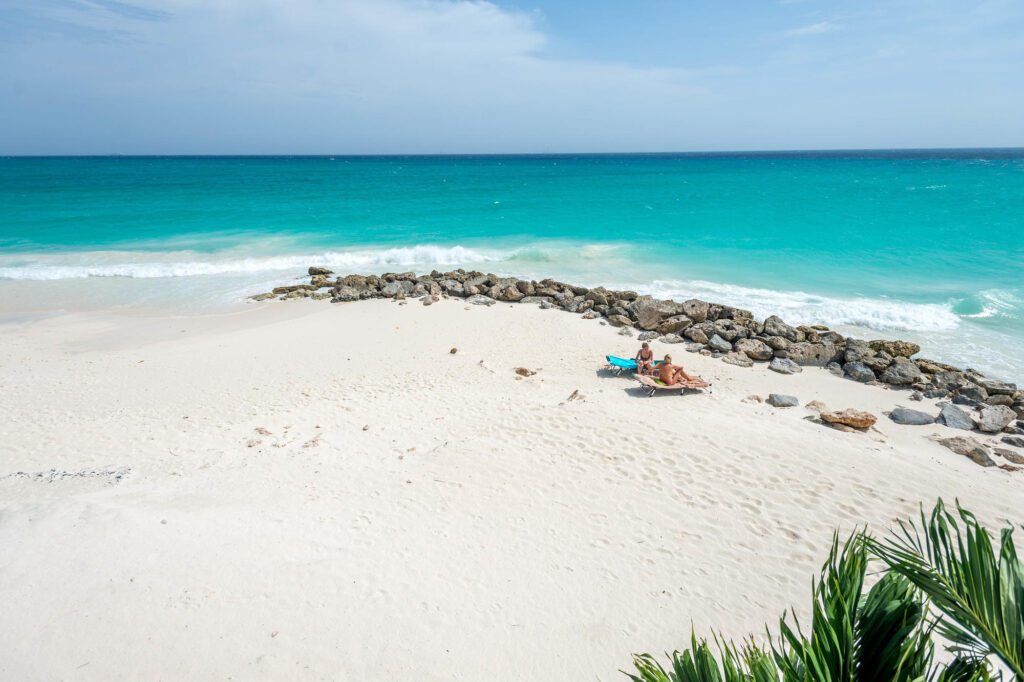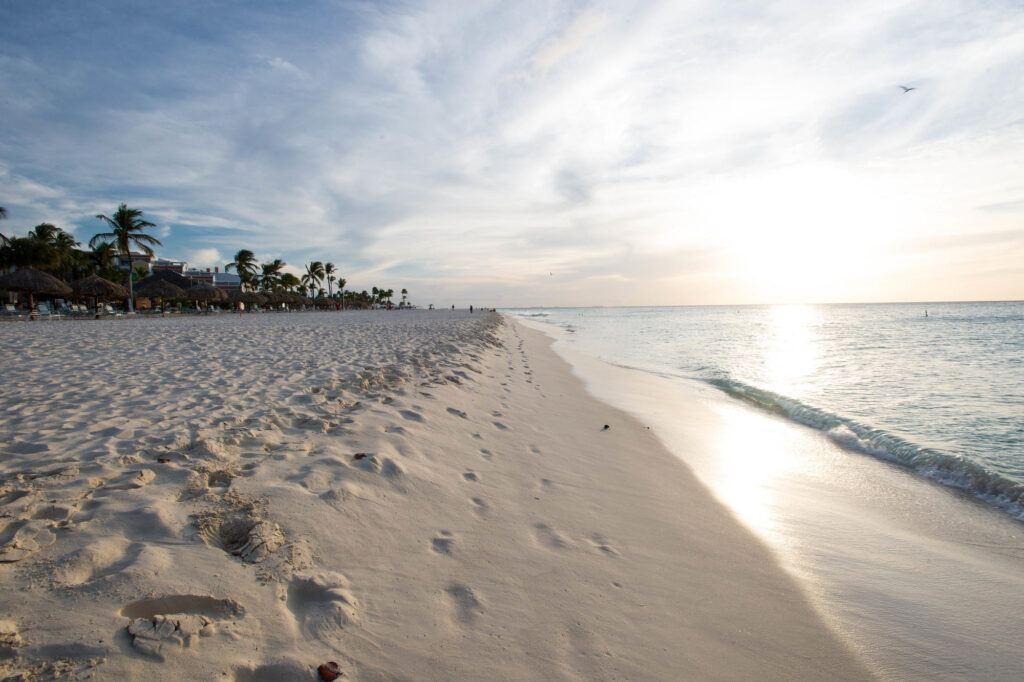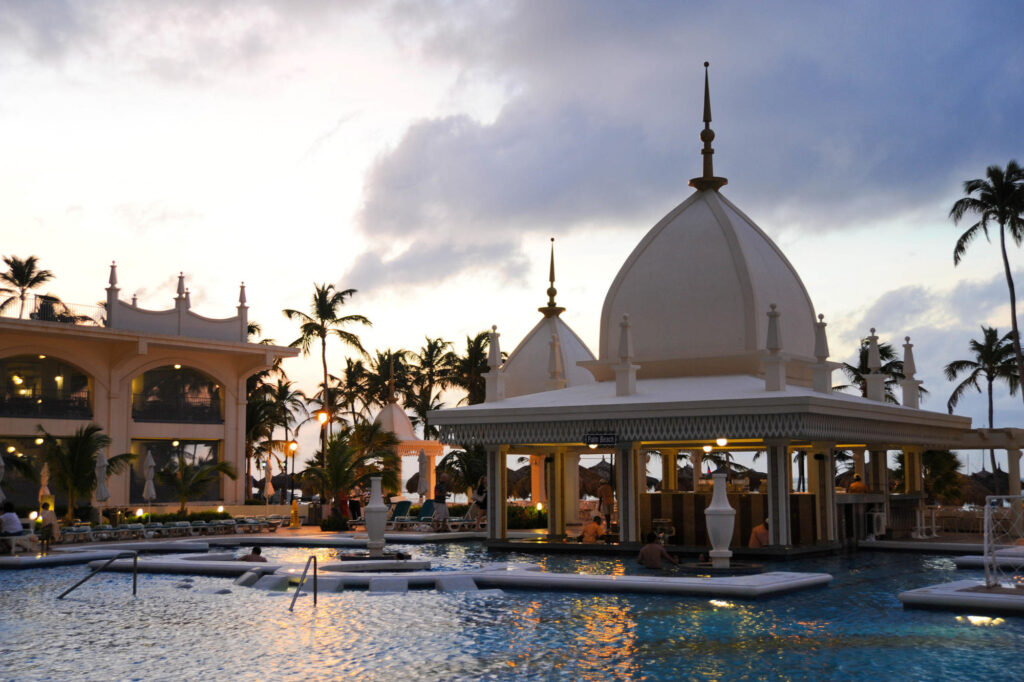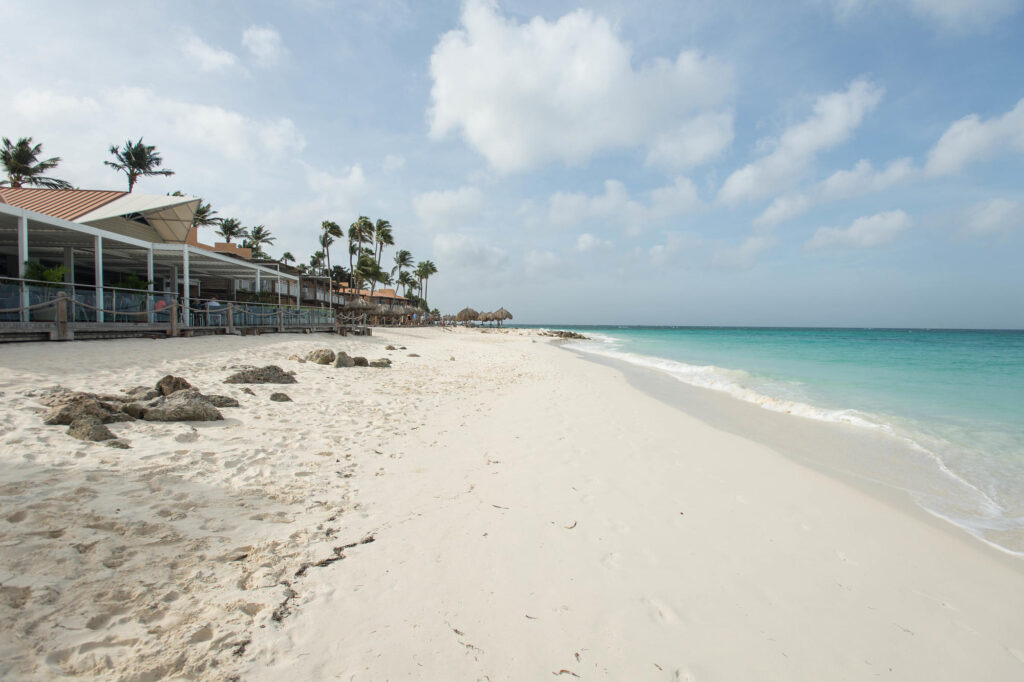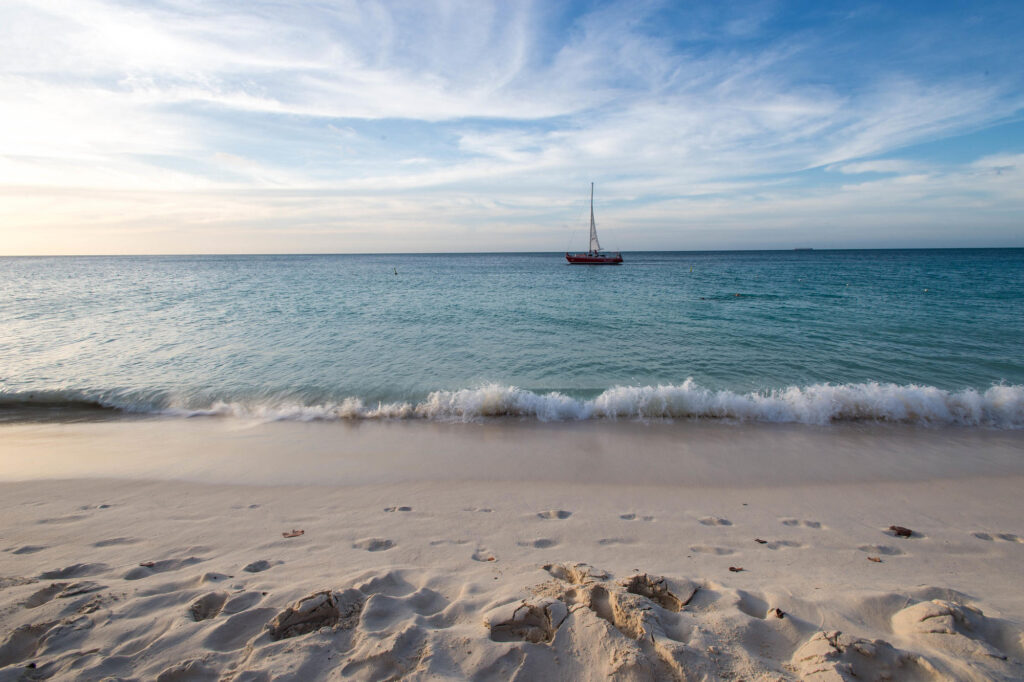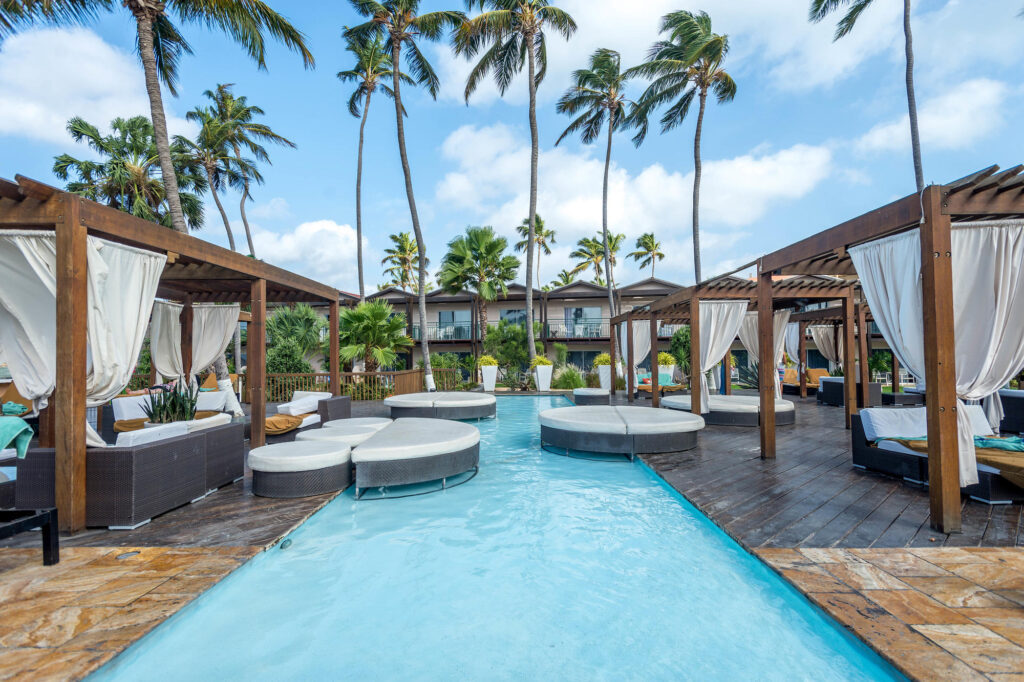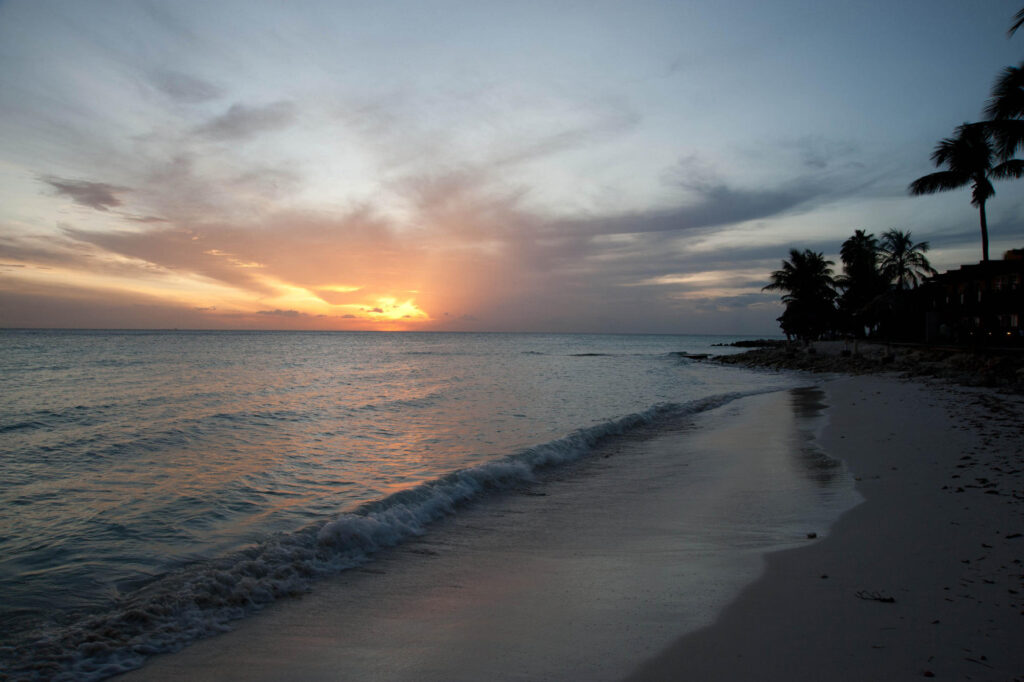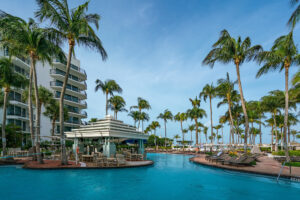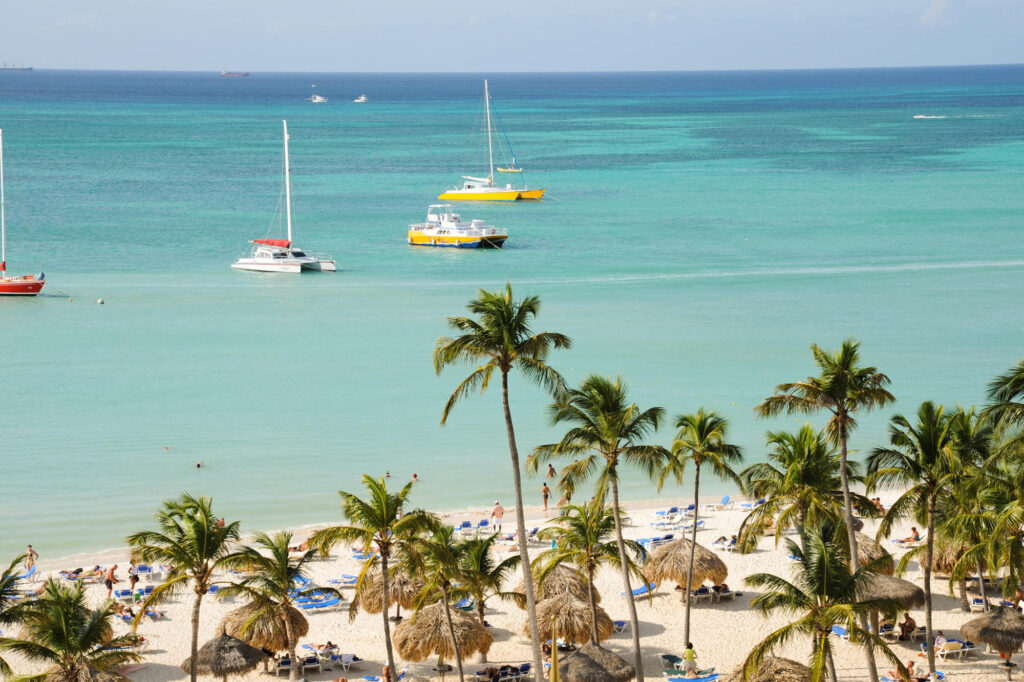 Beach at the Hotel Riu Palace Aruba/Oyster
Beach at the Hotel Riu Palace Aruba/OysterYear-round sunny weather, white-sand beaches, friendly locals, and tasty international cuisine—these are a few of the reasons we love Aruba. In addition to picture-perfect beaches, the clear water that rings the island is perfect for snorkeling and wreck diving. And while visiting Aruba is pretty easy, there are some things you should know before you get on the plane (No, visiting Flamingo Beach in Aruba isn't as easy as you think). We're covering everything from the when to go to Aruba to whether you need a visa, the best beach resorts, and what must-do experiences you need to book while traveling to Aruba. Read on for our 12 essential tips on how to have the best Aruba vacation.
Notice: Undefined offset: 4 in /nas/content/live/stagingstmllc/wp-content/plugins/smartertravel-shared/includes/ads/includes/api.php on line 92
Notice: Undefined offset: 5 in /nas/content/live/stagingstmllc/wp-content/plugins/smartertravel-shared/includes/ads/includes/api.php on line 92
Notice: Undefined offset: 6 in /nas/content/live/stagingstmllc/wp-content/plugins/smartertravel-shared/includes/ads/includes/api.php on line 92
Notice: Undefined offset: 4 in /nas/content/live/stagingstmllc/wp-content/plugins/smartertravel-shared/includes/ads/includes/api.php on line 98
Notice: Undefined index: pass_through_args in /nas/content/live/stagingstmllc/wp-content/plugins/smartertravel-shared/includes/ads/includes/api.php on line 158
Notice: Undefined index: wrapper in /nas/content/live/stagingstmllc/wp-content/plugins/smartertravel-shared/includes/ads/includes/api.php on line 159
Notice: Undefined offset: 4 in /nas/content/live/stagingstmllc/wp-content/plugins/smartertravel-shared/includes/ads/includes/api.php on line 92
Notice: Undefined offset: 5 in /nas/content/live/stagingstmllc/wp-content/plugins/smartertravel-shared/includes/ads/includes/api.php on line 92
Notice: Undefined offset: 6 in /nas/content/live/stagingstmllc/wp-content/plugins/smartertravel-shared/includes/ads/includes/api.php on line 92
Notice: Undefined offset: 4 in /nas/content/live/stagingstmllc/wp-content/plugins/smartertravel-shared/includes/ads/includes/api.php on line 98
Notice: Undefined index: pass_through_args in /nas/content/live/stagingstmllc/wp-content/plugins/smartertravel-shared/includes/ads/includes/api.php on line 158
Notice: Undefined index: wrapper in /nas/content/live/stagingstmllc/wp-content/plugins/smartertravel-shared/includes/ads/includes/api.php on line 159
Notice: Undefined offset: 4 in /nas/content/live/stagingstmllc/wp-content/plugins/smartertravel-shared/includes/ads/includes/api.php on line 92
Notice: Undefined offset: 5 in /nas/content/live/stagingstmllc/wp-content/plugins/smartertravel-shared/includes/ads/includes/api.php on line 92
Notice: Undefined offset: 6 in /nas/content/live/stagingstmllc/wp-content/plugins/smartertravel-shared/includes/ads/includes/api.php on line 92
Notice: Undefined offset: 4 in /nas/content/live/stagingstmllc/wp-content/plugins/smartertravel-shared/includes/ads/includes/api.php on line 98
Notice: Undefined index: pass_through_args in /nas/content/live/stagingstmllc/wp-content/plugins/smartertravel-shared/includes/ads/includes/api.php on line 158
Notice: Undefined index: wrapper in /nas/content/live/stagingstmllc/wp-content/plugins/smartertravel-shared/includes/ads/includes/api.php on line 159
Notice: Undefined offset: 4 in /nas/content/live/stagingstmllc/wp-content/plugins/smartertravel-shared/includes/ads/includes/api.php on line 92
Notice: Undefined offset: 5 in /nas/content/live/stagingstmllc/wp-content/plugins/smartertravel-shared/includes/ads/includes/api.php on line 92
Notice: Undefined offset: 6 in /nas/content/live/stagingstmllc/wp-content/plugins/smartertravel-shared/includes/ads/includes/api.php on line 92
Notice: Undefined offset: 4 in /nas/content/live/stagingstmllc/wp-content/plugins/smartertravel-shared/includes/ads/includes/api.php on line 98
Notice: Undefined index: pass_through_args in /nas/content/live/stagingstmllc/wp-content/plugins/smartertravel-shared/includes/ads/includes/api.php on line 158
Notice: Undefined index: wrapper in /nas/content/live/stagingstmllc/wp-content/plugins/smartertravel-shared/includes/ads/includes/api.php on line 159
Notice: Undefined offset: 4 in /nas/content/live/stagingstmllc/wp-content/plugins/smartertravel-shared/includes/ads/includes/api.php on line 92
Notice: Undefined offset: 5 in /nas/content/live/stagingstmllc/wp-content/plugins/smartertravel-shared/includes/ads/includes/api.php on line 92
Notice: Undefined offset: 6 in /nas/content/live/stagingstmllc/wp-content/plugins/smartertravel-shared/includes/ads/includes/api.php on line 92
Notice: Undefined offset: 4 in /nas/content/live/stagingstmllc/wp-content/plugins/smartertravel-shared/includes/ads/includes/api.php on line 98
Notice: Undefined index: pass_through_args in /nas/content/live/stagingstmllc/wp-content/plugins/smartertravel-shared/includes/ads/includes/api.php on line 158
Notice: Undefined index: wrapper in /nas/content/live/stagingstmllc/wp-content/plugins/smartertravel-shared/includes/ads/includes/api.php on line 159
1. Aruba is one of the safest islands in the Caribbean.
We’ve spent countless months traveling across the Caribbean and Mexico and are constantly asked about safety in the region’s many beach-filled destinations. The truth is that there are risks to travelers whenever they go anywhere, whether it’s to New York City, Europe, or the Caribbean. Unfortunately, the legacy of colonialism, economies that depend strictly on tourism, and deeply rooted inequality have caused some Caribbean islands to have higher crime rates than other parts of the world. When you add often sub-par infrastructure to the mix, the situation is often only exacerbated.
Aruba, though, is one of the safest exceptions to many of the problems that plague other Caribbean islands. Year after year, Aruba consistently ranks as one of the safest destinations in the Caribbean, with low rates of both violent and petty crime. Of course, you should exercise common sense and guard yourself against problems that plague tourists anywhere (theft of valuables and the like).
Part of the reason may be that Aruba lives up to its moniker of “One Happy Island.” And that slogan’s not superficial — it has a basis in economics. We spoke to a local at the Brickell Bay Beach Club & Spa about all the smiles we saw here while visiting, and they explained that the majority of the island’s residents are middle class, which isn’t always the case in Caribbean resort destinations. In Aruba, this controls the cost of living and social classism, reducing inequality and offering a more level quality of life throughout the island.
2. You need a passport, but you don’t need a visa to enter Aruba.
Traveling to Aruba doesn’t require a pre-arranged visa for U.S., Canadian, or E.U. member citizens. Same goes for China and many of Aruba’s nearby neighbors like Mexico and Colombia. All you have to do is hand your passport over to the immigration officer upon arrival and you’ll receive a free visa stamp that’s valid for 30 days. For those who end up falling in love with Aruba and want to extend their stay, it’s important to note that tourist visits are capped at a strictly-enforced 180 days per year.
3. Gambling is legal in Aruba.
It’s not only the sun, sand, and relaxation that bring travelers to Aruba—some come to try their luck in the casinos. Gambling is legal in Aruba, and is such a popular pastime here that all major resorts have their own in-house casinos in addition to the standalone spots dotting the island. Several casinos are open from noon until the wee hours of the morning, while others keep the games going 24 hours a day. For a taste of something local, try your hand at a game of Caribbean stud poker.
The Crystal Casino at Renaissance Aruba Resort & Casino is one of the classiest places to gamble in Aruba—it sparkles with Austrian crystal chandeliers, gold-leaf columns, Spanish mirrors, and Italian marble and brass. Open 24/7, this almost 15,000-square-foot (1,394-square-meter) parlor features over 370 slot machines, as well as tables for roulette, craps, blackjack, Caribbean stud poker, and Texas hold ’em. The Stellaris Casino at Aruba Marriott Resort & Stellaris Casino is the largest on the island, open 24/7, and includes 26 gaming tables and over 500 slot machines.
4. Does Aruba get hit by hurricanes? No (generally speaking).
One of the most frequent questions we get asked is “What Caribbean islands don’t get hit by hurricanes?” The true answer is that there is no one island that’s free of hurricane danger, but Aruba comes pretty close. In fact, Aruba is to the south of the Caribbean hurricane zone — where the majority of destructive storms develop. The most recent strike was from Hurricane Felix in 2007, which was a weak storm and only glancingly touched the island. That means booking a trip to Aruba is a safer bet than islands in more central Caribbean spots, like Cuba, the Dominican Republic, and the Bahamas.
5. The legal drinking and gambling age is 18 in Aruba.
While this probably won’t impact most travelers to Aruba, it’s a good thing to know for anyone planning a spring break getaway or family trip. Aruba is home to plenty of bars and casinos, and anyone who is at least 18 years old can enter them, get served alcohol, and throw down a bet.
6. You can drink the tap water in Aruba.
While some tropical destinations may have you questioning whether it’s safe to drink the water, you can confidently gulp down the H2O in Aruba. In fact, Aruba has some of the cleanest water in the world. The island is a veteran of the desalination process and has been creating their excellent drinking water using this method since 1932. That being said, travelers can leave the bottled water and purifying pills at home. Instead, opt for a refillable bottle and fill it up from the tap in your room to help keep this island free of more single-use plastics.
7. The best time to visit Aruba is January through September — but hotel prices vary seasonally.
Unlike many Caribbean islands, Aruba’s climate is significantly drier because it’s far outside the steamy hurricane belt (as mentioned above). The landscape here is arid, with brittle shrubs, cacti, and trademark divi-divi trees as far as the eye can see. For anyone who doesn’t feel like they are on vacation without a collection of palm trees swaying in the wind, don’t fret — much like the desert oasis of Palm Springs, Aruba is also home to its fair share of palm trees. This also means that the climate is much milder than your typical humid and steamy tropical island.
So when is the best time to visit Aruba? You could almost head here at any time of year and find nearly perfect weather. January through March are peak season, with warm temperatures and clear skies, though you’ll pay far more for your hotel when you visit at this time of year. While the rest of the Caribbean frets over hurricanes during the Northern Hemisphere’s summer, Aruba actually continues to enjoy great weather. Yes, you’ll see a few stray showers here and there, but April through September is a great time to visit, and sees far cheaper hotel rates than peak season. October through December brings the highest amount of precipitation, so if you’re hoping for the sunniest skies possible, avoid this time of year.
8. You won’t have to go far to find the best beaches in Aruba.
Aruba is justifiably famous for its beaches — blazing white sand, tranquil blue sea, and perfect breezes make them some of the best in the Caribbean. Whether you’re seeking out Flamingo Beach, the buzz of Eagle Beach and Palm Beach, or one of the many lesser-known beaches in northern Aruba, the perfect beach is here for you. You’ll also find a number of big Aruba beach resorts and boutique hotels posted up right on the sand. Aruba’s climate happens to make beachgoing particularly pleasant as well. Those near-constant trade winds we told you about mean that you never get too hot and sweaty, even when the temps reach 80 degrees. The island is a mere 866 miles from the equator (roughly the length of the California coastline), and while these cooling winds can feel blissful on the beach, they can also hide exactly how much heat you’re soaking in from the sun. The sun is strong, so be sure to bring plenty of eco-friendly sunscreen with a higher SPF, plus light cover-ups like a sarong or thin long-sleeved shirt, sunglasses, and a hat for optimum protection. Tip: Don’t forget to slather the tops of your feet with sunscreen — nobody likes sandal-shaped tan lines.
9. You don’t have to to speak the local language in Aruba.
Aruba sits just north of the coast of South America, near the islands of Curacao and Bonaire, making up the Netherlands Antilles. Like its neighboring islands, it’s also small. At approximately 74 square miles, Aruba is about the same size as Brooklyn. Luckily, it never feels crowded, though locals do mention they have an ever-growing number of expats who find their paradise here and never leave. Plus, That smaller size yields a sense of community around the island. It also makes getting around to different beaches, sites, and restaurants a breeze. Getting by is relatively easy for most tourists here as well. While Papiamento, a Creole language rooted in Dutch, English, Spanish, African, Portuguese, and French (among a few other languages), is the official mother tongue of Aruba, you don’t need to learn it. English is widely spoken, especially in tourist resorts, so there’s no need to worry about communication mishaps while on vacation.
10. From Flamingo Beach to Arikok National Park and wreck diving, Aruba has a lot to experience.
While there are plenty of people who come to Aruba to take it easy on the beach, others find their happy place among the destination’s several other activities. Aruba is one of the world’s best places to go kitesurfing and windsurfing, thanks to the constant trade winds, but there are a ton of other heart-pumping activities to take part in, too. Jump in a kayak and paddle through the mangroves, try your hand at deep-sea fishing, swim in the rock pools, or hop in a jeep for a bumpy off-roading adventure through the gorgeous Arikok National Park (you can also get out and hike around the photogenic landscape). There’s plenty going on underwater in Aruba as well, and the island is a prime destination for snorkeling and scuba diving. Wreck diving is particularly spectacular in Aruba.
Other ways to see the island include horseback riding along the coast, taking a walking tour of Oranjestad’s renovated monument homes, and visiting local rum shops. Check out the local crafts at Cosecha or head over to Zeerover’s, located in the quiet mostly locals-only area of Savaneta. Here, you can nosh on simple plates of fried fish while watching fisherman bring in the catch off the back docks.
If you’re looking for Flamingo Beach in Aruba, you’ll need to head offshore, as it’s part of the Renaissance Aruba Casino & Resort‘s private island. If you’re a guest at the resort, visiting Flamingo Beach is free. However, if you’re not staying at the resort, you’ll only be able to see Flamingo Beach if the resort has lower-than-normal occupancy and you’re willing to shell out a hefty per-person fee. So if you want a guaranteed date with the flamingos of Flamingo Beach, book a stay at the Renaissance Aruba.
11. Aruba is expensive, though you can pay in U.S. dollars or local currency.
There’s no way around it: Aruba is expensive. That’s true for many Caribbean islands, where much of the produce, food, and other goods are imported from elsewhere and where hotel rooms come at a premium. You can expect to spend at least $60 per person, per day, on food, and decent hotels will rarely be cheaper than $200 a night (and far higher in the January to march peak season). You can offset these costs by eating local fish and shopping at supermarkets for breakfast or lunch, instead of shelling out for fancy morning meals. Alcohol is likewise not particularly cheap, though it will come cheaper in supermarkets than at restaurants and bars. While Aruba does have its own currency, the florin, travelers can also pay for most things at most places in U.S. dollars. For example, when you dine out, you’ll often be asked which currency you prefer to pay in and most vendors accept American bills.
12. You don’t have to rent a car in Aruba (but you can if you want to).
The bus system is pretty solid on the island, with a major line running up and down the main beaches. While you won’t find Uber or other ride-sharing companies in Aruba (all taxis are government-regulated), it’s fairly easy to flag down a taxi, especially in popular tourist areas. If you don’t mind the exercise, it’s also possible to walk in Aruba. For example, you can walk the entire length of Palm Beach in about 20 minutes—just be sure to cover yourself from the sun, wear comfy sneakers, and carry water.
If you want the freedom to explore all the island has to offer, we recommend renting a car, at least for a few days. We’ll give you the good news first: Aruba drives on the same side of the road as the U.S., so any anxious drivers need not panic about learning to navigate a vehicle in the opposite lane. It’s also worth noting that Aruba may have different road rules than you’re used to, such as no turning on red. Some people find the street signs a bit confusing, so you may want to study up before you head down. If you are planning on checking out the Arikok National Park on a self-drive tour, we recommend a jeep, as it can get pretty bumpy.
Where to Stay in Aruba for Any Kind of Traveler: Aruba Marriott Resort & Stellaris Casino
The Aruba Marriott Resort & Stellaris Casino is an upscale hotel located directly on Palm Beach. The contemporary property offers several restaurant options, a large casino, luxe spa, and two outdoor pools — including a swim-up bar.
Where to Stay in Aruba for Adults Only: Bucuti & Tara Beach Resort Aruba
Bucuti & Tara Beach Resort is an adults-only property at the southern end of Eagle Beach. Guest rooms are expertly decorated with luxurious decor and higher-end amenities such as iHome systems, charging docks, minibars, and built-in TVs in bathroom mirrors. The real focal point of the hotel is the beachfront space. Grab a chair and enjoy the view.
NOW WATCH: 8 Things Every Traveler Should Know Before Traveling to Aruba
Check out our full travel guide to Aruba here.
You’ll Also Like:
- 9 Aruba Hotels Where You’ll Find Your Happy Place
- What You Need To Know Before You Visit Haiti
- 5 Caribbean Islands Generally Not Hit By Hurricanes
All products are independently selected by our writers and editors. If you buy something through our links, Oyster may earn an affiliate commission.
